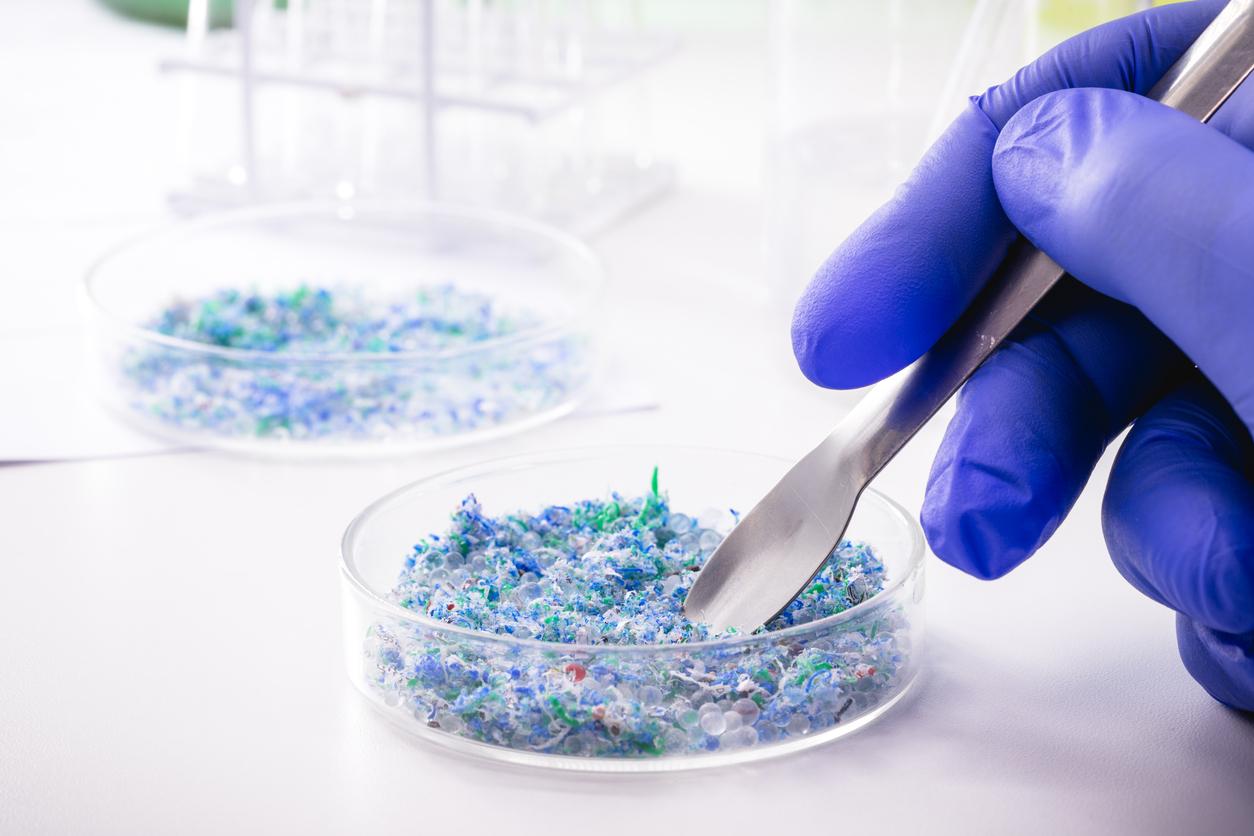Researchers have detected microplastics lodged in the olfactory bulb of the human brain.

- Researchers autopsied the brains of 15 deceased people and found 16 synthetic polymer particles and fibers in 8 of them.
- According to them, these particles enter our brain when we breathe.
- “Given the potential neurotoxic effects caused by microplastics in the brain and the widespread environmental contamination by plastics, our results should raise concerns in the context of the increasing prevalence of neurodegenerative diseases” such as Parkinson’s disease, ALS and other pathologies, they said.
We have found them in the blood, testicles, lungs, intestines, sperm and even fetuses… and now microplastics are also found in our brain! In any case, this is what a team of German and Brazilian researchers says: eight out of fifteen adults autopsied during their work presented microplastics in the olfactory bulb, the olfactory center of the brain. The analyzes were published on September 16, 2024 in the Journal of the American Medical Association.
Synthetic polymers found in dissected brains
The scientists dissected the brains of fifteen individuals, taking care not to use any plastic to preserve the integrity of the results. All of these individuals resided in Sao Paulo, Brazil at the time of death and ranged in age from 33 to 100 years (with a mean age of 69.5 years).
“A total of 16 synthetic polymer particles and fibers [plastique, ndlr] have been identified” in the brain olfactory bulbs of eight people, report the researchers. The plastic was polypropylene, one of the most common plastics, in 44% of cases. It is used in everything from food packaging to clothing and home accessories. For scientists, this suggests that “indoor environments are a major source of inhaled microplastics”.
Microplastics that enter the brain when we breathe
How did these particles get there? The team explains that the nasal mucosa which is located outside the brain can still interact with it through the cerebrospinal fluid. The microplastics then enter the olfactory bulb via tiny “perforations” in the bone structures found in this area. “So when you breathe through your nose, your olfactory nerve directly samples particles and responds to the particles you inhale as a direct sensory mechanism” said Dr. Wells Brambl, senior professor of medical toxicology at Long Island Jewish Medical Center in New York.
“The fact that there is no blood-brain barrier at this location leads to direct access to the brain”, he adds before expressing his concerns: “and more importantly, just above the olfactory nerve are the frontal and prefrontal lobes, where we think the seat of consciousness is.”
At present, scientists are not able to say whether this colonization affects our brain, but the “potential” is there. “Given the potential neurotoxic effects caused by microplastics in the brain and the widespread environmental contamination by plastics, our results should raise concerns in the context of the increasing prevalence of neurodegenerative diseases” such as Parkinson’s disease, ALS and other pathologies, they said.

















